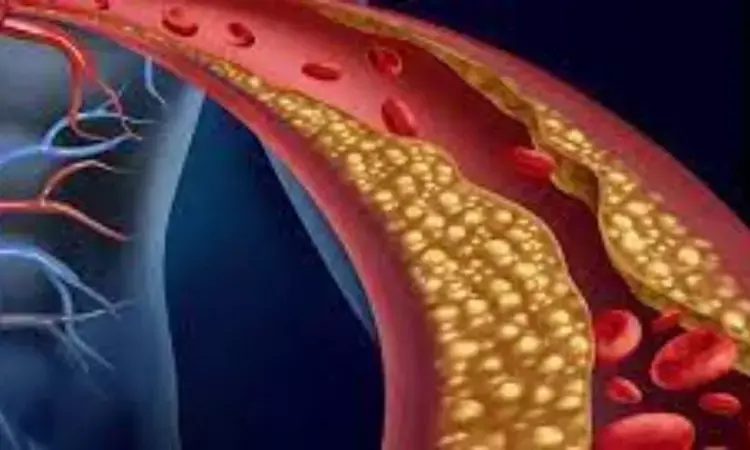- Home
- Medical news & Guidelines
- Anesthesiology
- Cardiology and CTVS
- Critical Care
- Dentistry
- Dermatology
- Diabetes and Endocrinology
- ENT
- Gastroenterology
- Medicine
- Nephrology
- Neurology
- Obstretics-Gynaecology
- Oncology
- Ophthalmology
- Orthopaedics
- Pediatrics-Neonatology
- Psychiatry
- Pulmonology
- Radiology
- Surgery
- Urology
- Laboratory Medicine
- Diet
- Nursing
- Paramedical
- Physiotherapy
- Health news
- Fact Check
- Bone Health Fact Check
- Brain Health Fact Check
- Cancer Related Fact Check
- Child Care Fact Check
- Dental and oral health fact check
- Diabetes and metabolic health fact check
- Diet and Nutrition Fact Check
- Eye and ENT Care Fact Check
- Fitness fact check
- Gut health fact check
- Heart health fact check
- Kidney health fact check
- Medical education fact check
- Men's health fact check
- Respiratory fact check
- Skin and hair care fact check
- Vaccine and Immunization fact check
- Women's health fact check
- AYUSH
- State News
- Andaman and Nicobar Islands
- Andhra Pradesh
- Arunachal Pradesh
- Assam
- Bihar
- Chandigarh
- Chattisgarh
- Dadra and Nagar Haveli
- Daman and Diu
- Delhi
- Goa
- Gujarat
- Haryana
- Himachal Pradesh
- Jammu & Kashmir
- Jharkhand
- Karnataka
- Kerala
- Ladakh
- Lakshadweep
- Madhya Pradesh
- Maharashtra
- Manipur
- Meghalaya
- Mizoram
- Nagaland
- Odisha
- Puducherry
- Punjab
- Rajasthan
- Sikkim
- Tamil Nadu
- Telangana
- Tripura
- Uttar Pradesh
- Uttrakhand
- West Bengal
- Medical Education
- Industry
Primary-hypercholesterolemia may increase risk of hepatic complications in general population: Study

Researchers have found that hypobetalipoproteinemia (HBL), characterized by permanently low levels of low-density lipoprotein-cholesterol (LDL-C), significantly increases the risk of cirrhosis complications and primary liver cancer. A recent study was published in the Journal of Hepatology by Matthieu W. and colleagues.
While low LDL-C levels are known to reduce cardiovascular risk, the broader health implications remain contentious. In primary HBL, incidences of liver steatosis and cirrhosis have been occasionally reported. This study aimed to investigate the association between HBL and the risk of hepatic complications in the general population, specifically focusing on cirrhosis complications and primary liver cancer.
A cohort study was conducted using data from the French CONSTANCES cohort and the UK Biobank (UKBB) cohort. Participants with primary HBL (LDL-C <5th percentile for age and sex) were compared to those with normal LDL-C levels (40th-60th percentile). Those on lipid-lowering therapies were excluded. Incidence density ratios (IDRs) were calculated to compare follow-up events related to hepatic complications.
The study analyzed 34,653 participants from CONSTANCES and 94,666 from the UKBB, with median ages of 45 and 56 years, respectively. The mean LDL-C concentrations in the HBL group versus the control group were 71 mg/dl vs. 128 mg/dl in CONSTANCES and 86 mg/dl vs. 142 mg/dl in the UKBB, with follow-up durations of 5.0 and 11.5 years.
Incidence of Hepatic Complications: In CONSTANCES, the HBL group had an incidence of 0.32/1,000 person-years compared to 0.07/1,000 person-years in the control group (IDR = 4.50, 95% CI 1.91-10.6).
In the UKBB, the incidence was 0.69/1,000 person-years for the HBL group vs. 0.21/1,000 person-years for the control group (IDR = 3.27, 95% CI 2.63-4.06).
Independence from Classical Risk Factors: The increased risk of hepatic complications in the HBL group was independent of obesity, alcohol consumption, diabetes, and viral hepatitis, as shown in a 5-year landmark analysis excluding early events.
The study underscores the independent association between HBL and an increased risk of hepatic complications, including primary liver cancer. This risk persists even when classical risk factors for liver disease are accounted for. Sensitivity analyses using apolipoprotein-B levels and genetically defined HBL showed consistent results, further validating the findings.
HBL should be recognized as a significant independent risk factor for liver diseases, necessitating specific prevention and screening strategies. Given the marked risk of hepatic complications in HBL patients, regular liver monitoring is crucial. The findings from this study reveal a critical need for targeted health interventions and continuous liver monitoring in individuals with hypobetalipoproteinemia. This approach could mitigate the elevated risk of liver disease complications associated with this lipid disorder.
Reference:
Wargny, M., Goronflot, T., Rimbert, A., Boursier, J., Kab, S., Henny, J., Lainé, A., Leux, C., Smati, S., Hadjadj, S., Le May, C., Goldberg, M., Zins, M., & Cariou, B. (2024). Primary hypocholesterolemia is associated with an increased risk of hepatic complications in the general population. Journal of Hepatology, 80(6), 846–857. https://doi.org/10.1016/j.jhep.2024.01.030
Dr Riya Dave has completed dentistry from Gujarat University in 2022. She is a dentist and accomplished medical and scientific writer known for her commitment to bridging the gap between clinical expertise and accessible healthcare information. She has been actively involved in writing blogs related to health and wellness.
Dr Kamal Kant Kohli-MBBS, DTCD- a chest specialist with more than 30 years of practice and a flair for writing clinical articles, Dr Kamal Kant Kohli joined Medical Dialogues as a Chief Editor of Medical News. Besides writing articles, as an editor, he proofreads and verifies all the medical content published on Medical Dialogues including those coming from journals, studies,medical conferences,guidelines etc. Email: drkohli@medicaldialogues.in. Contact no. 011-43720751


